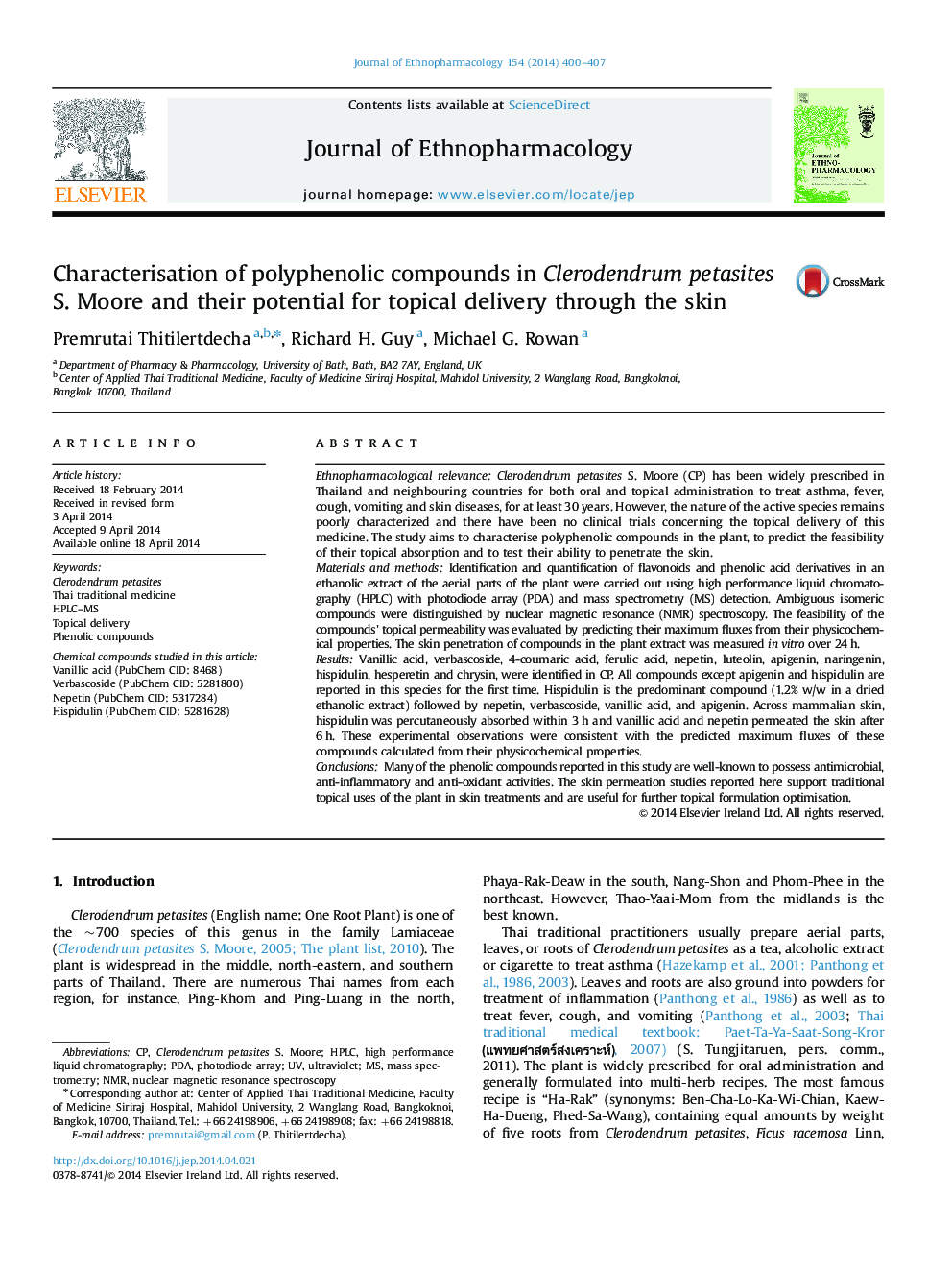| کد مقاله | کد نشریه | سال انتشار | مقاله انگلیسی | نسخه تمام متن |
|---|---|---|---|---|
| 2545144 | 1123935 | 2014 | 8 صفحه PDF | دانلود رایگان |

Ethnopharmacological relevanceClerodendrum petasites S. Moore (CP) has been widely prescribed in Thailand and neighbouring countries for both oral and topical administration to treat asthma, fever, cough, vomiting and skin diseases, for at least 30 years. However, the nature of the active species remains poorly characterized and there have been no clinical trials concerning the topical delivery of this medicine. The study aims to characterise polyphenolic compounds in the plant, to predict the feasibility of their topical absorption and to test their ability to penetrate the skin.Materials and methodsIdentification and quantification of flavonoids and phenolic acid derivatives in an ethanolic extract of the aerial parts of the plant were carried out using high performance liquid chromatography (HPLC) with photodiode array (PDA) and mass spectrometry (MS) detection. Ambiguous isomeric compounds were distinguished by nuclear magnetic resonance (NMR) spectroscopy. The feasibility of the compounds׳ topical permeability was evaluated by predicting their maximum fluxes from their physicochemical properties. The skin penetration of compounds in the plant extract was measured in vitro over 24 h.ResultsVanillic acid, verbascoside, 4-coumaric acid, ferulic acid, nepetin, luteolin, apigenin, naringenin, hispidulin, hesperetin and chrysin, were identified in CP. All compounds except apigenin and hispidulin are reported in this species for the first time. Hispidulin is the predominant compound (1.2% w/w in a dried ethanolic extract) followed by nepetin, verbascoside, vanillic acid, and apigenin. Across mammalian skin, hispidulin was percutaneously absorbed within 3 h and vanillic acid and nepetin permeated the skin after 6 h. These experimental observations were consistent with the predicted maximum fluxes of these compounds calculated from their physicochemical properties.ConclusionsMany of the phenolic compounds reported in this study are well-known to possess antimicrobial, anti-inflammatory and anti-oxidant activities. The skin permeation studies reported here support traditional topical uses of the plant in skin treatments and are useful for further topical formulation optimisation.
Figure optionsDownload high-quality image (237 K)Download as PowerPoint slide
Journal: Journal of Ethnopharmacology - Volume 154, Issue 2, 11 June 2014, Pages 400–407